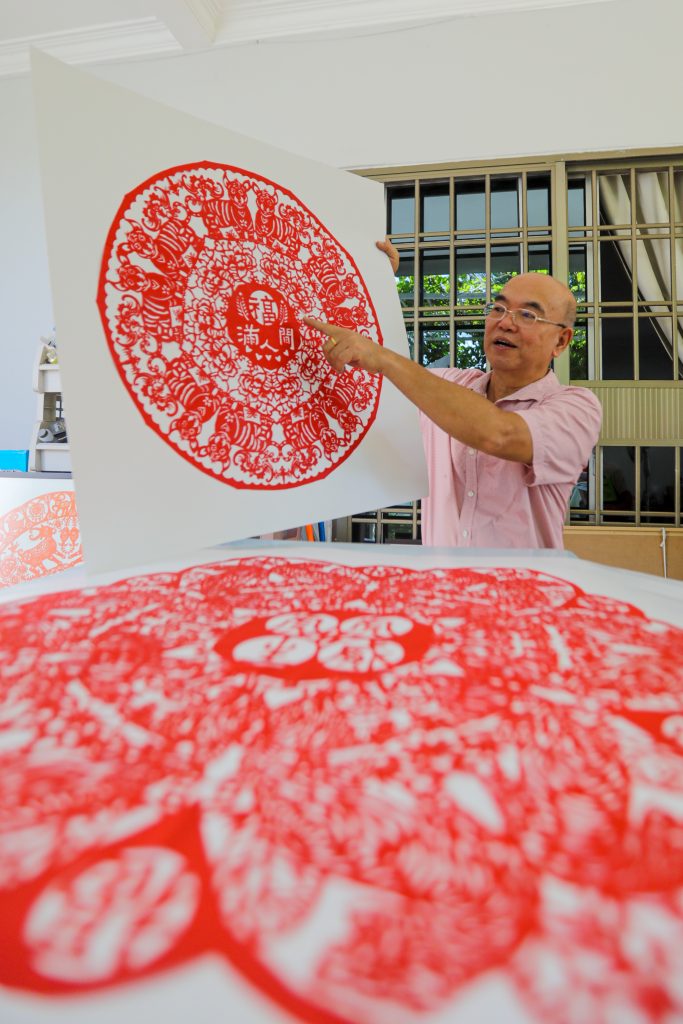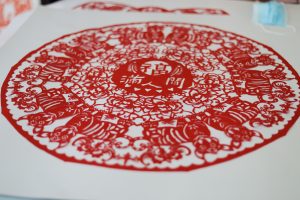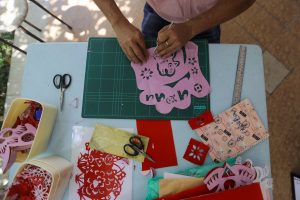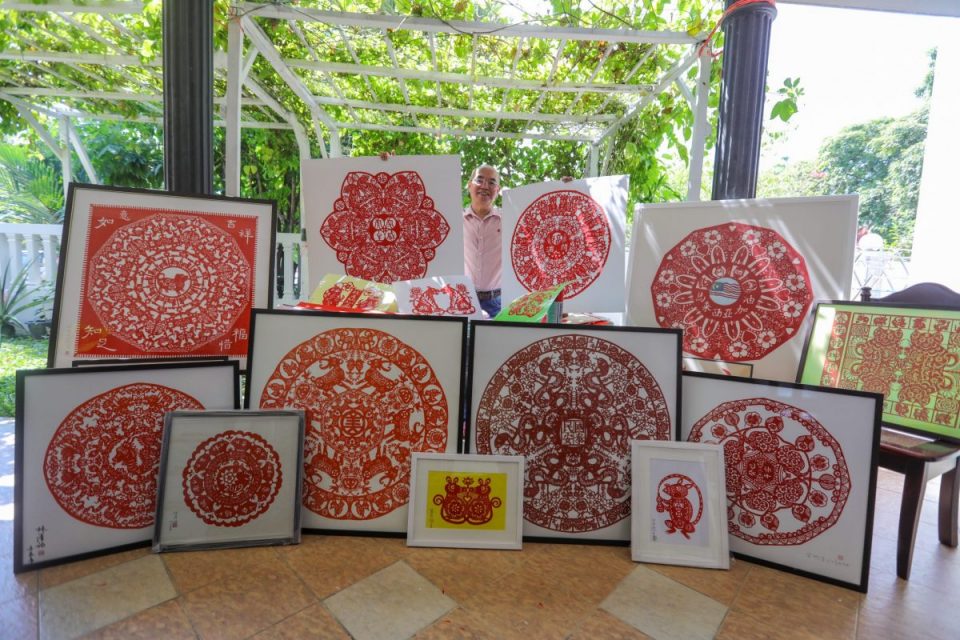By Alang Bendahara
BEFORE the days of automation, the ancient art of paper cutting was done by hand, with a pair of scissors, a knife and a needle as tools.
With machines now taking over the tedious task, paper cutting looks like child play and is fast becoming a lost art.
One man in Klang, however, still keeps the tradition alive.
Each year before the Chinese New Year takes place and a new zodiac animal replaces the old, retired Mandarin language teacher Lim Cheng Hock, 64, would craft beautiful and intricate designs to give to his friends and relatives.
Persistence

“I did this to preserve my culture, as during my time as a teacher in a private Chinese school I discovered that whenever the Chinese New Year came by, people would only do makan-makan.
“During the Chinese New Year celebration in 1987, the principal of the Hin Hua High School in Klang where I was teaching asked me to showcase the paper cutting art for the students.
From that year onwards, I would do demonstrations and classes whenever Chinese New Year drew near,” said Lim, who also taught music and was a school counsellor before he retired.
Lim said that as an educator, he is thankful to have been given the chance to instil the love of paper cutting in his students.
But he has never given classes outside of school.
Thankfully for paper cut enthusiasts, Lim came out with a book in 2018 that details his passion and showcases his most exquisite pieces.
“Nowadays, paper cutting is so easy to learn, not like in my time where I had to find a master to teach me. In the digital world, anybody can pick it up from Youtube or social media platforms.
“The key to mastering it is patience and persistence, as well as creativity,” he said.
Lim is saddened that not many people are showing an interest in the art.
“It might be because there is not much to be made from it, and it is painstaking work. Many people prefer calligraphy, as a few fast masterful strokes of the brush can fetch a much higher price.”
Window flowers

Jianzhi is a traditional style of paper cutting in China that originated from the Han Dynasty (206 BC to 220 AD). The Chinese first used these intricately patterned paper to decorate their doors and windows during festivals, thus cementing its name as chuang hwa or ‘window flowers’.
Lim said the delicate cut-outs are most often in red to symbolise good fortune and happiness and displayed on auspicious occasions like weddings and births.
“I like to incorporate elements like flowers, fruits and objects that symbolise love, longevity, peace and happiness,” he said.
In 2009, Chinese paper cutting was included in Unesco’s list of Intangible Cultural Heritage.
Captivated
“At the age of 15, I started to take an interest in papercutting when my elder brother learnt it at school. It was beautiful. Yet I only dabbled in it as an amateur.
“In 1977, I went to the National Taiwan Normal University to further my studies in Chinese literature. It was during this time that I bought many books on paper cutting from Taiwan and China.
“However, it was only in 1984 when I went back to Taipei to learn singing that I met a paper-cutting master from whom I learned all the techniques,” said the jovial father of two who also loves planting fruit trees in his Taman Bayu Perdana home.
Although Lim’s lessons with the master were just for a few days, it was enough to fuel a lifetime of work.
Simple tools

Paper cutting is not an expensive art to learn.
“Although there are so many techniques, I choose to use a pair of scissors and the easily available segmented ‘snap-off’ blade. The red paper just cost 60 sen a piece,” he said.
To do a human torso-sized paper cut takes three to four days to complete if Lim spends about four hours a day on it.
He said the trick is to visualise the outcome before drawing the design. The paper can be folded just once or up to six times. Then the cutting begins, after which the paper is unfolded to display the full magnificence of the symmetrical patterns.
An artist’s life
After his retirement in 2006, Lim found joy in singing and in being a choir teacher. But when each New Year draws near, he would bring out his tools again, sometimes creating close to 300 pieces of paper cuts.
This year, however, he has produced only 70 pieces, focusing on the tiger.
“These days, I prefer to keep all my designs and enjoy them on my own,” he said with a laugh.
Yet, he still entertains calls to do demonstrations at shopping malls leading up to the Chinese New Year.
“When I was young, my family was very poor. With proper education, we now live well, but my heart is forever rooted in my culture, which is why I love Chinese paper cutting and want more people to know about it,” he said.
This article first appeared in the Selangor Journal monthly February edition, published on January 24, 2022.





